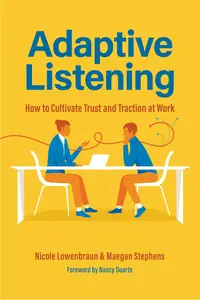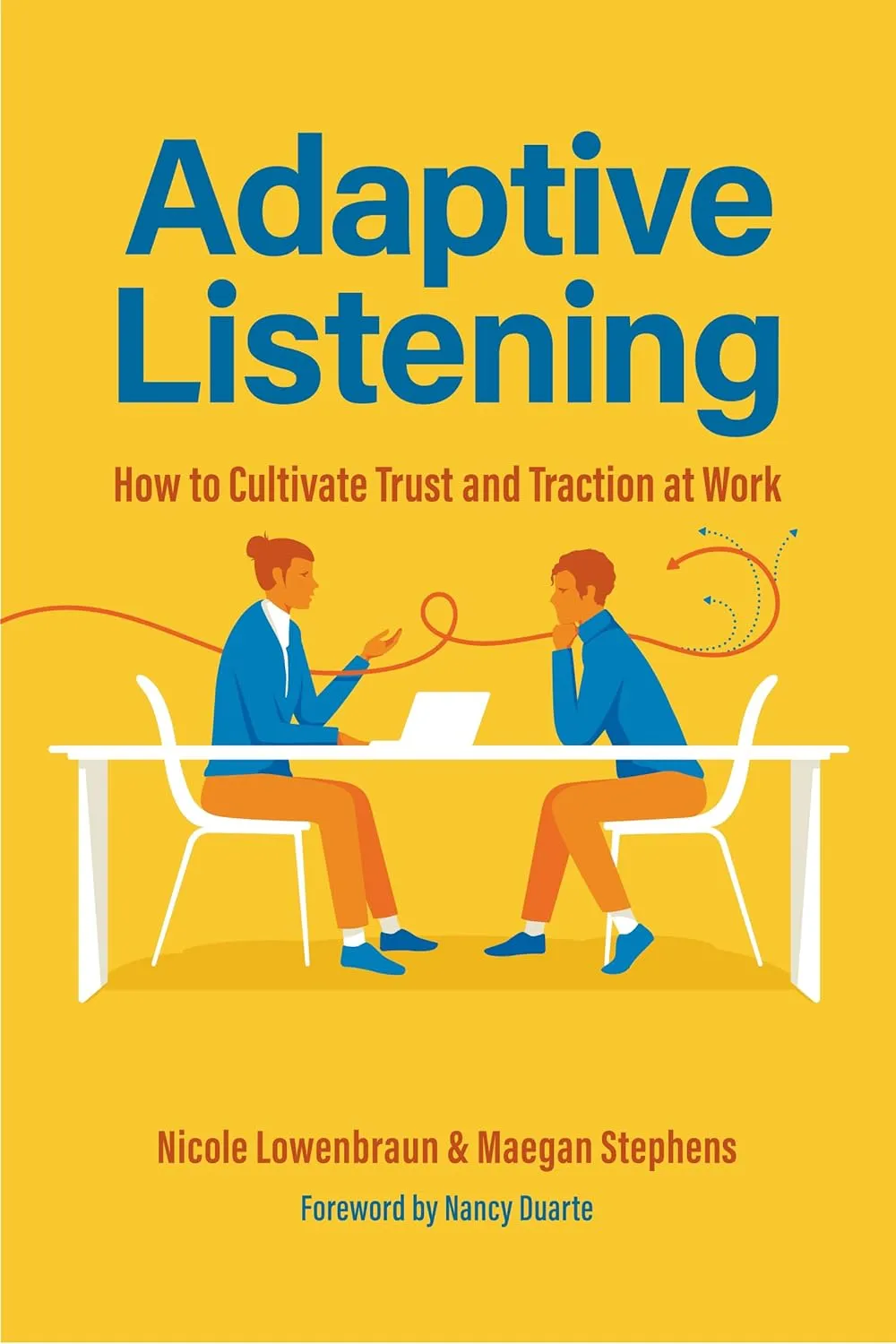Adaptive Listening: How to Cultivate Trust and Traction at Work by Nicole Lowenbraun, Maegan Stephens, Nancy Duarte
English | February 28, 2024 | ISBN: N/A | ASIN: B0CJLSRDWD | 341 pages | EPUB | 3.26 Mb
English | February 28, 2024 | ISBN: N/A | ASIN: B0CJLSRDWD | 341 pages | EPUB | 3.26 Mb
There Isn’t One Way to Listen. It’s Time to Adapt Your Listening!
“Adaptive Listening is incredible. [It] made me evaluate all aspects of my interactions in life.” ─Workshop participant from Cisco
#1 New Release in Running Meetings & Presentations and Human Resources & Personnel Management
Adaptive Listening is for those who want to improve the way they, and their teams, communicate up, down, across, internally, and externally. Through engaging stories and practical techniques, discover a new model for listening in the workplace.
Not just another book on communication. Adaptive Listening helps you up-level the under-trained side of communication amidst the realities of a hectic workday. Researched and tested exclusively in the work setting, Adaptive Listening moves you beyond active listening, embracing easy-to-remember techniques that strengthen relationships and get work done more effectively.
Leaders at all levels can improve listening skills. Aspiring, emerging, and established leaders can build more awareness about their own listening style and the impact it has on their workday. Only then can they adapt the way they listen to meet the goals and needs of direct reports, peers, managers, customers, and stakeholders, all while contributing to a positive workplace culture.
Inside learn:
- How to leverage the strengths and avoid the pitfalls of your listening style by recognizing how you prefer to process and respond to information
- How to break away from ineffective listening and step into Adaptive Listening to meet the goals and needs of the person speaking
- How to reduce mistrust, misalignment, and miscommunication by being more mindful of the barriers that prevent you from using empathetic communication
- How to cue other listeners to listen in the way you want and need



